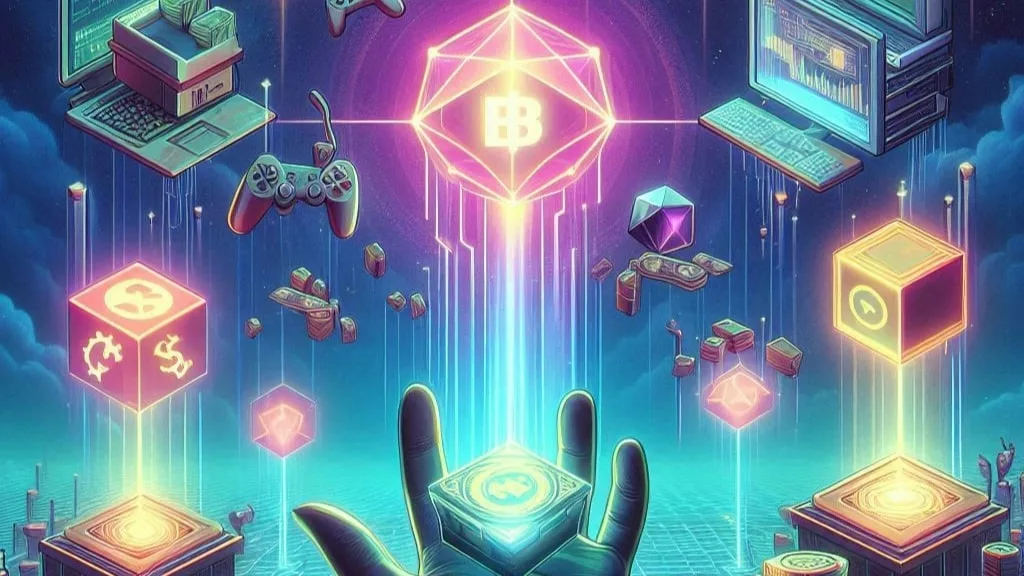When non-fungible tokens (NFTs) first captured public attention, headlines often focused on pixelated avatars selling for millions or speculative trading frenzies. While the hype has cooled, the underlying technology is evolving rapidly, offering practical applications that could transform digital ownership, gaming, and creative industries.
At their core, NFTs are blockchain-based tokens that guarantee uniqueness, authenticity, and verifiable ownership. This makes them far more than collectibles—they are tools with real-world utility, capable of powering art, gaming ecosystems, and even digital rights management in ways previously unimaginable.
What Are NFTs?
NFTs function as digital certificates of ownership. Unlike cryptocurrencies such as Bitcoin or Ethereum, which are interchangeable, each NFT is unique. Built on blockchains like Ethereum, Solana, or Polygon, NFTs cannot be copied or swapped one-to-one.
This uniqueness allows NFTs to link digital assets—artwork, music, videos, or in-game items—to verifiable ownership. The blockchain acts as an immutable ledger, providing proof of authenticity and ownership without the need for intermediaries like galleries, distributors, or publishers.
NFTs and Digital Art: More Than Speculation
Digital art became one of the earliest and most visible use cases for NFTs. Artists can mint their work on a blockchain, creating a permanent, unalterable record of provenance. While some NFT pieces have made headlines for selling at astonishing prices, the real innovation lies in royalty automation.
With NFTs, creators can earn a percentage every time their work is resold, ensuring they benefit from future appreciation. This contrasts sharply with traditional art markets, where artists often miss out on secondary market profits. The result is a more equitable system for creators, making NFTs a tool for long-term financial sustainability in the arts.
From Play-to-Pay to Play-to-Own in Gaming
In the gaming world, NFTs are redefining ownership. Traditionally, gamers spend money on skins, weapons, or other in-game items, but these purchases remain confined to a single platform. NFTs change this dynamic by turning digital items into assets players truly own.
Through play-to-own mechanics, in-game assets can be traded, sold, or used across multiple platforms, giving players real value and control. This approach transforms virtual economies, making digital items not just collectible but financially meaningful and transferable.
By integrating NFTs into gaming, developers create ecosystems where players can invest time and money with confidence, knowing their contributions are tied to verifiable ownership.
Digital Rights Management Made Transparent
Another promising area for NFTs is digital rights management (DRM). Traditional DRM systems are often cumbersome, involving restrictions on downloads, streaming, or geographic access. NFTs allow rights to be embedded directly into a token.
For example, an NFT representing a song could grant streaming rights, concert access, or even a share of royalties. The same approach can be applied to movies, ebooks, and other digital content. NFTs streamline licensing, offering creators more control and enabling consumers to access assets transparently and securely.
This capability positions NFTs as a solution for one of the most persistent problems in digital media: how to manage ownership, usage, and monetization efficiently.
Expanding Horizons: NFTs Beyond Art and Gaming
NFT adoption is no longer limited to art and gaming. NFTs are now being explored for event tickets, real estate deeds, supply chain verification, and more. Across these use cases, the common benefit is trust—NFTs provide a verifiable way to confirm authenticity and ownership without relying on centralized intermediaries.
As blockchain technology becomes faster, cheaper, and more energy-efficient, the potential applications for NFTs will continue to grow. Layer-2 scaling solutions and eco-friendly blockchains are addressing past concerns about high fees and energy consumption, while clearer regulatory frameworks are gradually emerging to guide legal adoption.
Challenges and the Path Forward
Despite the growth in NFT utility, challenges remain. Market volatility, regulatory uncertainty, and high transaction costs on certain chains have slowed widespread adoption. NFT ecosystems must overcome these hurdles to transition from speculative trends to essential infrastructure in digital commerce.
Emerging solutions, such as eco-friendly blockchains and more efficient minting protocols, aim to reduce costs and environmental impact. As the technology matures, NFTs are poised to evolve from niche collectibles into practical tools that empower creators, gamers, and enterprises alike.
Conclusion: NFT Utility Is Here to Stay
NFTs may no longer dominate headlines as they did in 2021, but the underlying technology continues to advance. Beyond speculative trading, NFTs are quietly reshaping digital ownership, offering meaningful utility in art, gaming, and digital rights management.
Creators can earn ongoing royalties, gamers can truly own in-game assets, and digital content can be distributed with transparent, verifiable rights. The hype may have faded, but the utility of NFTs is undeniable, establishing a foundation for a more equitable, decentralized, and efficient digital economy.
For businesses, artists, and gamers, the era of practical NFT adoption has arrived, signaling that NFTs are more than a trend—they are a permanent fixture in the evolution of digital assets.
Post Views: 68

